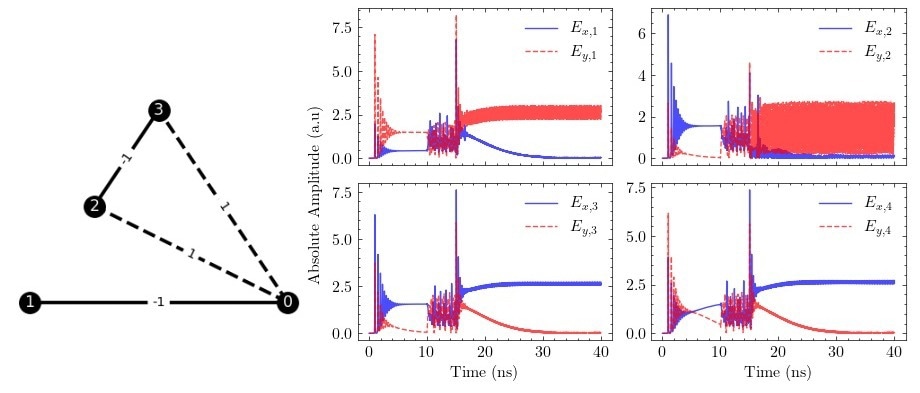Reviewed by Lexie CornerFeb 26 2024
Efficiently tackling complex challenges is essential in the data-driven world. However, when faced with many interacting variables, traditional computers frequently find this difficult, resulting in inefficiencies like the von Neumann bottleneck.
 In an Ising computer (illustrated here with 4 bits), the variables all evolve towards a solution in parallel. Image Credit: Loke, B., et al.
In an Ising computer (illustrated here with 4 bits), the variables all evolve towards a solution in parallel. Image Credit: Loke, B., et al.
A novel kind of collective state computing has been developed to tackle this difficulty, which maps these optimization difficulties onto the so-called Ising problem in magnetism.
With regards to how it operates, consider visualizing a problem as a network with edges connecting nodes. Every node possesses two states, denoting possible solutions: +1 and -1. Based on the idea of a Hamiltonian, the objective is to identify the configuration that minimizes the system's total energy.
Researchers are looking into physical technologies that can solve the Ising Hamiltonian more quickly than conventional computers. One possible strategy is using light-based methods, where information is stored in characteristics like polarization state, phase, or amplitude. These systems can swiftly determine the right answer by utilizing effects such as optical feedback and interference.
Researchers from the National University of Singapore and the Agency for Science, Technology, and Research examined the use of a system of vertical-cavity surface-emitting lasers (VCSELs) to solve Ising difficulties in a study that was published in the Journal of Optical Microsystems. The VCSELs' linear polarization states, each of which represents a possible solution, are used in this configuration to encode information. The lasers are interconnected, and they interact with one another.
Promising results were obtained when the researchers tested their system on small 2-, 3-, and 4-bit Ising tasks. However, they also noted certain difficulties, such as the requirement for minimal VCSEL lasing anisotropy, which would be challenging to accomplish in real-world settings.
However, if these obstacles are overcome, an all-optical VCSEL-based computer architecture with the ability to solve problems beyond the current capabilities of conventional computers may result.
Journal Reference:
Loke, B., et al. (2024) Linear polarization state encoding for Ising computing with optically injection-locked VCSELs. Journal of Optical Microsystems. doi.org/10.1117/1.JOM.4.1.014501